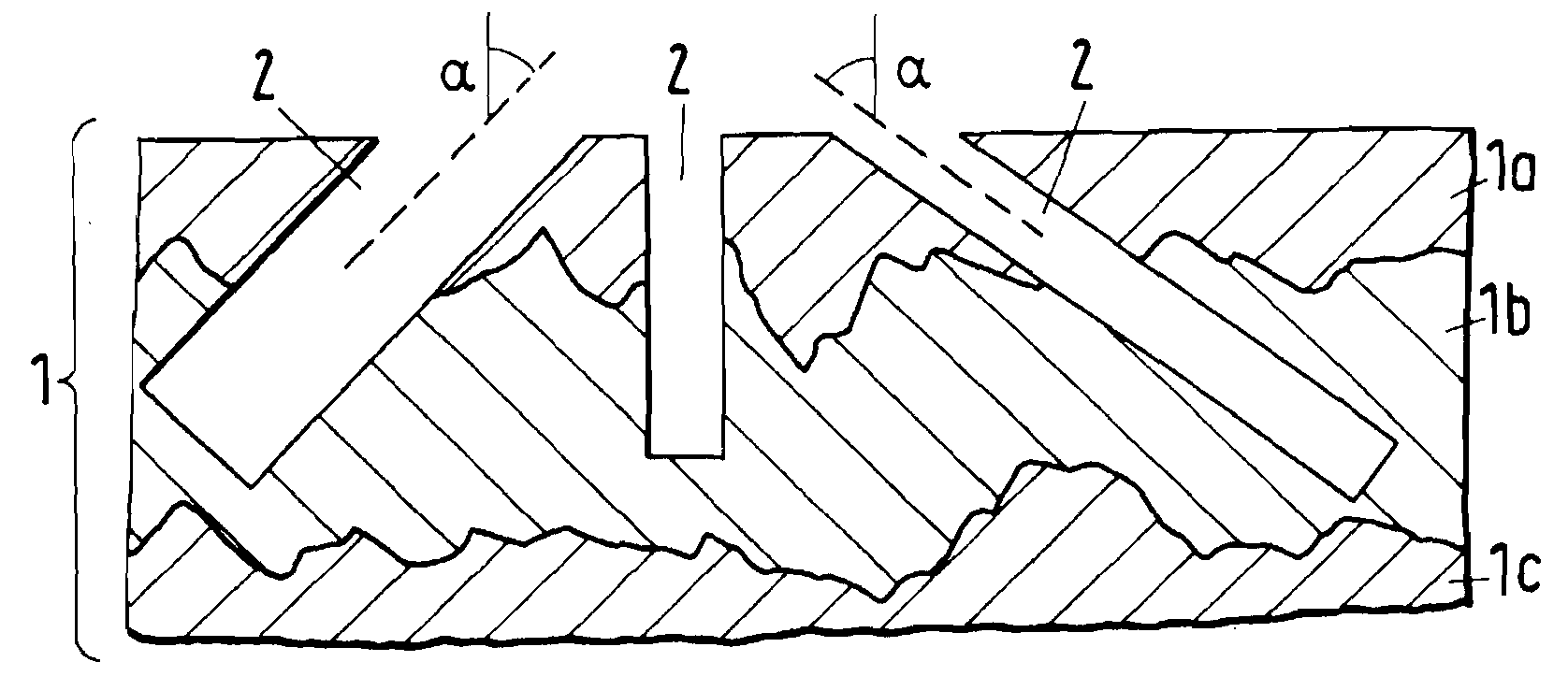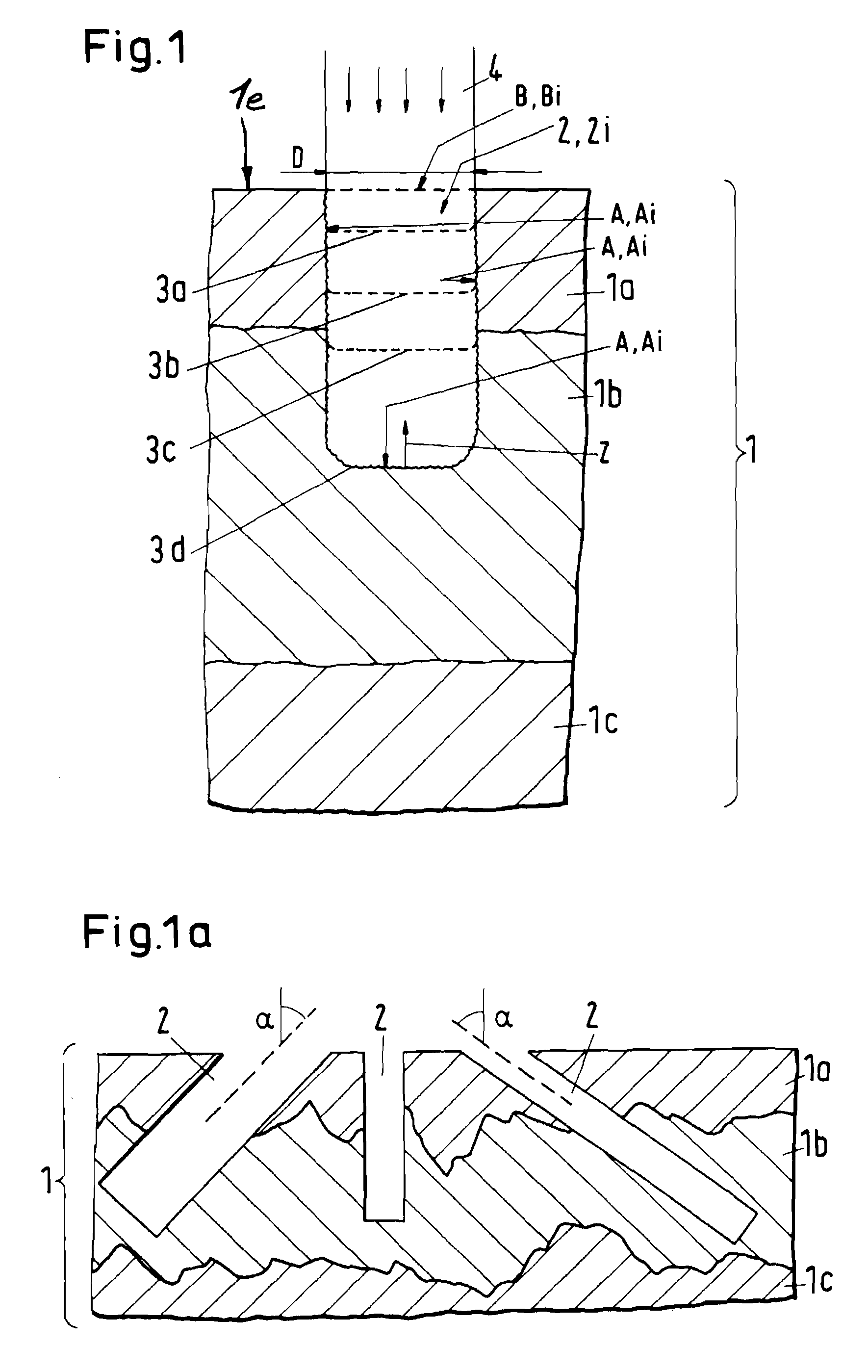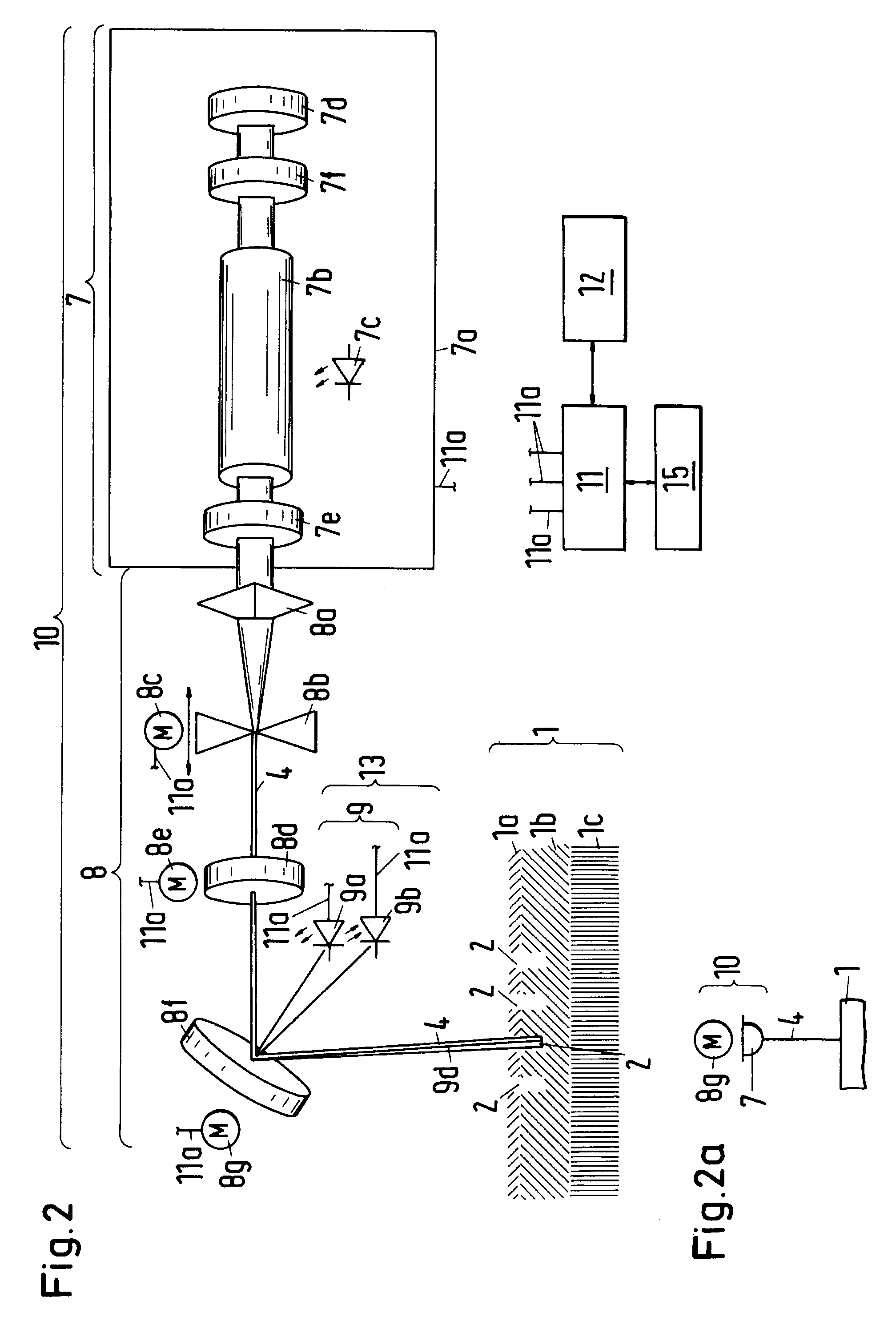Laser Microporator
a laser microporator and microporous technology, applied in the field of laser microporators, can solve the problems of increasing skin permeability to various substances, and achieve the effect of negligible damage to melanocytes
- Summary
- Abstract
- Description
- Claims
- Application Information
AI Technical Summary
Benefits of technology
Problems solved by technology
Method used
Image
Examples
Embodiment Construction
[0083]FIG. 1 shows a cross-sectional view of the top layers of the biological membrane 1, a human skin, having a surface 1e and including a stratum corneum 1a, an epidermal layer or epidermis 1b and a dermal layer or dermis 1c. The outermost layer of skin, the stratum corneum 1a, is a dead cell layer, usually between 10 and 20 microns (μm) thick, but depending on individual differences, the stratum corneum can also have a thickness of only about 5 μm, for example, for a new born child. The stratum corneum 1a contains hydrophilic keratinocytes surrounded by a hydrophobic extra-cellular matrix of lipids, mainly ceramide. Due to the structural and compositional uniqueness, the stratum corneum 1a presents the greatest barrier to transdermal flux of drugs or other molecules into the body, and of body fluids and other analytes out of the body. The stratum corneum 1a is continuously renewed by shedding of corneum cells, with an average turnover time of 2-3 weeks.
[0084]Underlying the stratu...
PUM
 Login to View More
Login to View More Abstract
Description
Claims
Application Information
 Login to View More
Login to View More - R&D
- Intellectual Property
- Life Sciences
- Materials
- Tech Scout
- Unparalleled Data Quality
- Higher Quality Content
- 60% Fewer Hallucinations
Browse by: Latest US Patents, China's latest patents, Technical Efficacy Thesaurus, Application Domain, Technology Topic, Popular Technical Reports.
© 2025 PatSnap. All rights reserved.Legal|Privacy policy|Modern Slavery Act Transparency Statement|Sitemap|About US| Contact US: help@patsnap.com



